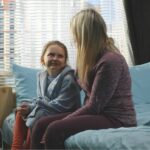As reports of efforts to ban books have popped up across the United States in recent months, the New York and Brooklyn Public Libraries have decided to grant free access to their selection of banned or challenged books to anyone in the country through the end of May. The new policy is part of their “Books for All” project which promotes free and open access to knowledge for everyone.
How to access free banned books
In partnership with publishers Hachette Book Group, Macmillan Publishers, and Scholastic, the New York Public Library is waiving all fees and wait times for their “Books for All” e-book collection through the end of next month. The selection of often-challenged books for every age group is available to everyone in the US, with or without a library card.
To access the collection, first download the SimplyE app. Then enter your birthdate under the “Books for All” section to get started (readers under the age of 12 will only have access to books for young readers). The collection of banned books includes Speak by Laurie Halse Anderson and Stamped: Racism, Antiracism, and You by Jason Reynolds and Ibram X. Kendi, which have been among the most commonly banned and challenged books in the country over the past year.
The Brooklyn Public Library has a similar initiative called “Books UnBanned.” For a limited time, young readers between the ages of 13 and 21 will be able to apply for a free digital library card from the library. For one year, card owners will have access to hundreds of thousands of e-books, audiobooks, and databases. To apply for the card, email [email protected] or visit their Instagram account @bklynfuture for more information.
Why access to banned books matters to families
In a recent statement, New York Public Library President Anthony W. Marx spoke about the “Books for All” initiative. “Knowledge is power; ignorance is dangerous and breeds hate and division. Since their inception, public libraries have worked to combat these forces simply by making all perspectives and ideas accessible to all, regardless of background or circumstance.”
According to the Office of Intellectual Freedom at the American Library Association, 2021 saw the highest number of attempts on record to remove books from shelves. Books featuring content about people with marginalized identities such as people of color or LGBTQ+ people are most often the targets of these attempts. This can lead to the white-washing and sanitizing of important concepts and historical contexts, as Gwen C. Katz laid out in a viral Twitter thread in response to the Tennessee school board banning of Maus by Art Spiegelman, a graphic novel about the atrocities of the Holocaust.
Many argue that presenting challenging content to children in the context of literature is a safe way to open up conversations with them about difficult topics, especially in the controlled environment of a classroom with a knowledgeable teacher to help them understand and process what they’re learning. Reading depictions of sexual situations, violence, suicide, racism, or other frequently banned types of content, can give young readers the vocabulary to talk about topics that may otherwise be hard for them to address. For more banned books to read as a family, see our list.







